Ditapis dengan

Publikasi Peraturan Kepala Kantor Otoritas Pelabuhan Utama Tanjung Priok Tent…
- Edisi
- 1
- ISBN/ISSN
- -
- Deskripsi Fisik
- -
- Judul Seri
- Publikasi Peraturan Kepala Kantor Otoritas Pelabuhan Utama Tanjung Priok Tentang Standar Kinerja Pelayanan Operasional Pelabuhan Pada Pelabuhan Tanjung Priok
- No. Panggil
- REF GEN PUB o
- Edisi
- 1
- ISBN/ISSN
- -
- Deskripsi Fisik
- -
- Judul Seri
- Publikasi Peraturan Kepala Kantor Otoritas Pelabuhan Utama Tanjung Priok Tentang Standar Kinerja Pelayanan Operasional Pelabuhan Pada Pelabuhan Tanjung Priok
- No. Panggil
- REF GEN PUB o
formulate and implement a sustainable
hopes
- Edisi
- authentic
- ISBN/ISSN
- consistent
- Deskripsi Fisik
- happiness
- Judul Seri
- and marketing success
- No. Panggil
- which is based on several new models
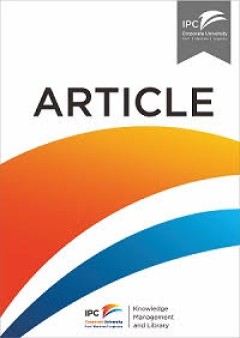
Port-centric logistics, dry ports and offshore logistic hubs- strategies to o…
- Edisi
- Vol 39 Issue: 2, pp. 207-226
- ISBN/ISSN
- 0308–8839
- Deskripsi Fisik
- -
- Judul Seri
- Maritime Policy & Management: The flagship journal of international shipping and port research
- No. Panggil
- ATC PO MON p
- Edisi
- Vol 39 Issue: 2, pp. 207-226
- ISBN/ISSN
- 0308–8839
- Deskripsi Fisik
- -
- Judul Seri
- Maritime Policy & Management: The flagship journal of international shipping and port research
- No. Panggil
- ATC PO MON p
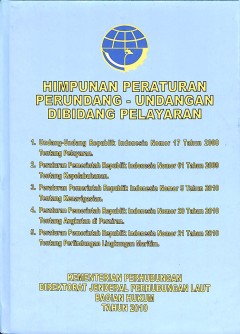
Himpunan Peraturan Perundang - Undangan Dibidang Pelayaran
Himpunan Peraturan Perundang - Undangan Dibidang Pelayaran
- Edisi
- -
- ISBN/ISSN
- -
- Deskripsi Fisik
- - p, 22 cm
- Judul Seri
- -
- No. Panggil
- LC 623.8 LAU h

Key Success Factors of Indonesia Pendulum from Logistics and Supply Chain Man…
The Indonesia's economic growth has developed in line with world economic growth. This has brought increasing in Indonesia's inter islands seaborne trade. In the purpose to connecting Indonesia's regions (Sumatera, Jawa, Kalimantan, Sulawesi, and rest of the eastern region), the Indonesia's government brought the concept of Indonesia' Pendulum/Pendulum�…
- Edisi
- -
- ISBN/ISSN
- -
- Deskripsi Fisik
- 90 p., : illus : table : 30 cm
- Judul Seri
- -
- No. Panggil
- TD MG WIN k
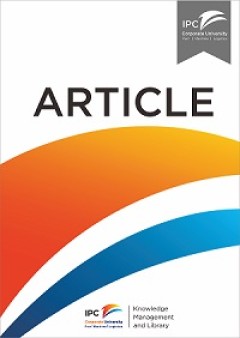
Defining maritime logistics hub and its implication for container port
Since the hub-and-spoke concept was introduced to the aviation market after the US airline deregulation in the late 1970s, it becomes a primary distribution model employed by leading international logistics companies. This pattern drives the companies to consolidate shipments on the large scale at major terminals (i.e. hub) and to redistribute the smaller scale of shipments to their respective …
- Edisi
- VOL. 38, NO. 3, 269–292
- ISBN/ISSN
- 1464–5254
- Deskripsi Fisik
- 25 p.
- Judul Seri
- Maritime Policy & Management: The flagship journal of international shipping and port research
- No. Panggil
- ATC LO NAM d

An application of multi-criteria analysis to the location of a container hub …
The South African container port system is subject to a major revision of the existing port hierarchy. The aim is to move away from a set of gateway ports to a hub port configuration. Such a shift would allow the South African port system to benefit better from market dynamics. This paper deals with the application of multi-criteria analysis (MCA) to the evaluation of three alternative location…
- Edisi
- VOL. 38, NO. 1, 51–79
- ISBN/ISSN
- 1464–5254
- Deskripsi Fisik
- 31p
- Judul Seri
- Maritime Policy & Management: The flagship journal of international shipping and port research
- No. Panggil
- ATC LO NOT a
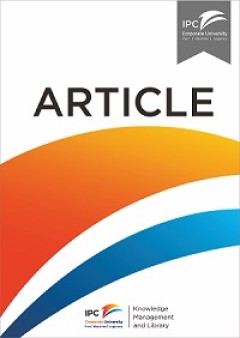
Berth management in container terminal: the template design problem
One of the foremost planning problems in container transshipment operation concerns the allocation of home berth (preferred berthing location) to a set of vessels scheduled to call at the terminal on a weekly basis. The home berth location is subsequently used as a key input to yard storage, personnel, and equipment deployment planning. For instance, the yard planners use the home berth templat…
- Edisi
- -
- ISBN/ISSN
- -
- Deskripsi Fisik
- 24 p.
- Judul Seri
- REGULAR ARTICLE
- No. Panggil
- ATC MG PIA b

The feeder network design problem: application to container services in the b…
Global containership liners design their transportation service as hub- and spoke networks to improve the access to local transportation markets and to reduce operational costs by using short-sea connections for low-volume transportation lanes. These connections from the hub ports to the regional ports constitute the feeder network that is serviced by small- or medium-sized feeder containership…
- Edisi
- Vol. 16, 3, 343–369
- ISBN/ISSN
- -
- Deskripsi Fisik
- 27 p.
- Judul Seri
- -
- No. Panggil
- MR

Location of mid-range dry ports in multimodal logistic networks
In the recent literature a lot of attention has been given to intermodal transportation networks, mainly related to inland freight mobility. In particular, the landside distribution of maritime containers from/to seaports has been the focus of many research works. In fact, seaports are now suffering the lack of space at maritime terminals and the growing congestion on their access routes with t…
- Edisi
- -
- ISBN/ISSN
- -
- Deskripsi Fisik
- 11 p.
- Judul Seri
- -
- No. Panggil
- ATC PO SCO l
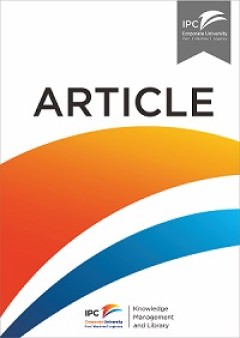
Competition and collaboration among container ports
The development of new ports in China and the enhancement of port facilities in Korea will force major Japanese ports, which were the region’s hub ports until the 1980s, to become local feeder ports for entry into East Asia. To consider the integration of cargo flow and liner networks, such Japanese ports need to collaborate with each other rather than compete with neighboring ports on an ind…
- Edisi
- Volume 26 Number 1
- ISBN/ISSN
- 2092-5212
- Deskripsi Fisik
- 18 p.
- Judul Seri
- -
- No. Panggil
- ATC PO HOS c

Coach terminal as important element of transport infrastructure
The determination of the coach terminal as passenger logistics hub is described. The factors responsible for successful functioning of this hub are discussed. The location of the coach terminal is one of the important factors. The present coach terminal is located in the heart of the city where land availability is critical. The simulation model of the terminal was developed to complement the d…
- Edisi
- Vol XXII, No 3
- ISBN/ISSN
- 1648-3480
- Deskripsi Fisik
- 8 p.
- Judul Seri
- Transport
- No. Panggil
- ATC PO GRO c

Hub status and indexation of container ports
Although ports play a traditional role as loading and connecting centers for cargo and passengers, container ports as intermodal junctions have undergone continuous and diverse changes since the late 1950s as a result of technological advancements and transport network expansion. In orderto shed light on the port transformation process, the objective of the present paper is to develop a hub in…
- Edisi
- Volume 31
- ISBN/ISSN
- -
- Deskripsi Fisik
- 20 pages
- Judul Seri
- -
- No. Panggil
- ATC PO PAR h

Application of FMCDM model to selecting the hub location in the marine transp…
Hub location selection problems have become one of the most popular and important issues not only in the truck transportation and the air transportation, but also in the marine transportation. The main focus of this paper is on container transshipment hub locations in southeastern Asia. Transshipment is the fastest growing segment of the containerport market, resulting in significant scope to d…
- Edisi
- -
- ISBN/ISSN
- -
- Deskripsi Fisik
- 11 p.
- Judul Seri
- Mathematical and Computer Modelling
- No. Panggil
- ATC LO CHA a

Morning briefing at work
- Edisi
- -
- ISBN/ISSN
- 978-602-03-0028-3
- Deskripsi Fisik
- 247 p., 21 cm
- Judul Seri
- Practical leadership guide book
- No. Panggil
- LE LIO m
- Edisi
- -
- ISBN/ISSN
- 978-602-03-0028-3
- Deskripsi Fisik
- 247 p., 21 cm
- Judul Seri
- Practical leadership guide book
- No. Panggil
- LE LIO m
 Karya Umum
Karya Umum  Filsafat
Filsafat  Agama
Agama  Ilmu-ilmu Sosial
Ilmu-ilmu Sosial  Bahasa
Bahasa  Ilmu-ilmu Murni
Ilmu-ilmu Murni  Ilmu-ilmu Terapan
Ilmu-ilmu Terapan  Kesenian, Hiburan, dan Olahraga
Kesenian, Hiburan, dan Olahraga  Kesusastraan
Kesusastraan  Geografi dan Sejarah
Geografi dan Sejarah